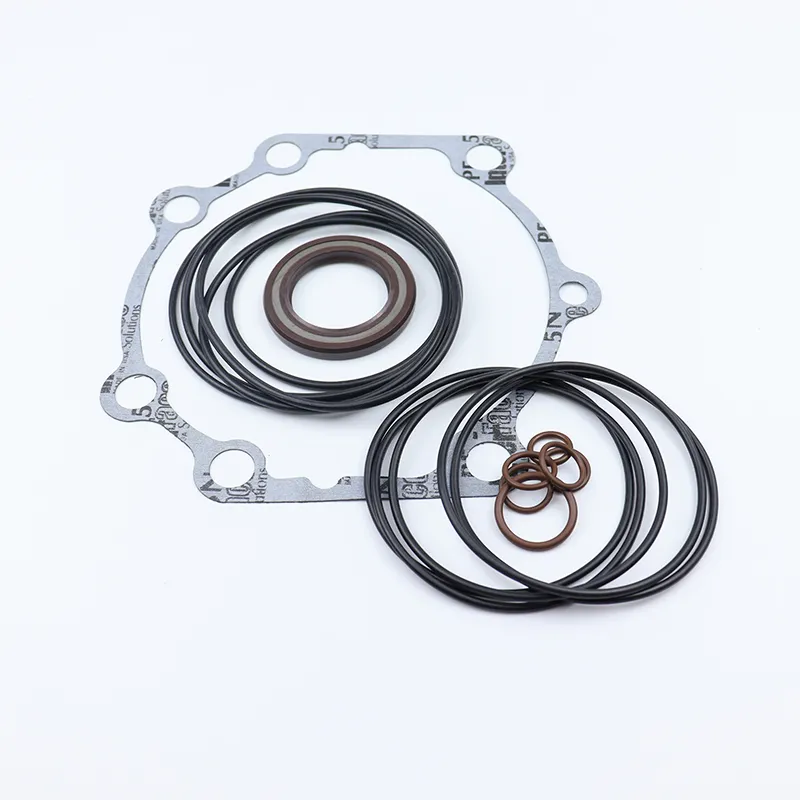Aug . 12, 2024 15:36 Back to list
Design and Functionality of Cylinder Gland Seals for Enhanced Hydraulic Performance and Reliability
Understanding Cylinder Gland Seals Critical Components in Fluid Power Systems
The cylinder gland seal, often referred to simply as a gland seal, is an integral component in many hydraulic and pneumatic systems. Its primary function is to prevent the escape of fluid or gas from the cylinder, ensuring that the system operates efficiently and safely. As industrial applications continue to evolve, so too does the design and materials used in gland seals, making them crucial for enhancing performance and extending the lifespan of machinery.
The Role of Cylinder Gland Seals
At its core, the cylinder gland seal serves several important purposes. Firstly, it maintains the pressure within the hydraulic or pneumatic cylinder. This pressure is essential for the effective operation of powered cylinders, which in turn drives machinery and equipment in various applications. Without a reliable sealing mechanism, the contained fluid could leak out, resulting in a loss of pressure, which compromises system functionality.
Furthermore, gland seals help protect the internal components of the cylinder from external contamination. Dust, dirt, and other particulates can enter the system if there are gaps in the sealing mechanism. This contamination can cause significant wear and tear on the seals and internal surfaces, resulting in premature failure and costly repairs. Thus, a well-designed gland seal not only improves the efficiency of the system but also contributes to its longevity.
Types of Cylinder Gland Seals
There are several types of cylinder gland seals, each designed for specific applications and environments
. The most common types include O-rings, lip seals, and piston seals.1. O-Rings These are circular seals made from elastomeric materials that fit into a groove and compress against a smooth surface. They are cost-effective and versatile, suitable for various pressures and temperatures.
cylinder gland seal

2. Lip Seals Featuring a flexible lip, these seals create a barrier against leaking fluids and contaminants. They are particularly effective in dynamic applications where there is a relative motion between the sealing surfaces.
3. Piston Seals Specifically designed for use in hydraulic cylinders, piston seals help maintain high pressures while allowing for smooth movement of the piston within the cylinder.
Materials and Design Considerations
The choice of material for cylinder gland seals is crucial. Common materials include nitrile rubber, polyurethane, and PTFE (Teflon), each offering different properties. For instance, nitrile rubber is excellent for oil resistance, while PTFE is favored for high-temperature applications. The environmental conditions, such as temperature fluctuations and exposure to chemicals, also dictate material selection.
Design considerations are equally important. A well-designed gland seal will account for factors like pressure, speed, and the type of fluid involved. Engineers must ensure that the seal can withstand the operational demands while minimizing friction and wear.
Maintenance and Replacement
Although cylinder gland seals are designed for durability, they do require maintenance and eventual replacement. Regular inspections can help identify signs of wear, such as cracking or deformation. Timely replacement of worn seals can prevent catastrophic failures and costly downtime.
In conclusion, the cylinder gland seal is a vital component in hydraulic and pneumatic systems, ensuring operational efficiency and system integrity. With advancements in materials and design, gland seals are becoming increasingly effective in meeting the diverse requirements of modern applications. Whether in manufacturing, construction, or transportation, understanding and maintaining these seals is essential for optimal performance and reliability. As technology continues to advance, the future of cylinder gland seals promises even greater innovations that will enhance the capabilities of fluid power systems globally.
-
The Trans-formative Journey of Wheel Hub Oil Seals
NewsJun.06,2025
-
Graphene-Enhanced Oil Seals: Revolutionizing High-Pressure Oil Sealing
NewsJun.06,2025
-
Future of Hydraulic Sealing: Advanced Intelligent TCN Oil Seals
NewsJun.06,2025
-
Don’t Let a Broken TCV Oil Seal Ruin Your Day
NewsJun.06,2025
-
Bio-Inspired Dust Seals for Better Sealing Performance
NewsJun.06,2025
-
Biodegradable and Sustainable Hydraulic Seal Materials
NewsJun.06,2025
-
Top Oil Seal Solutions for Your Industrial Needs
NewsMay.22,2025
Products categories
















